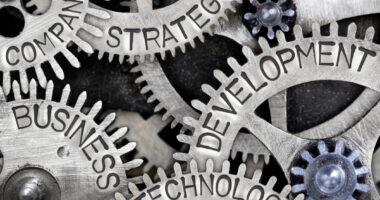The New Health Economy: What’s the Impact on the Pharmaceutical Industry?
The pharmaceutical industry is part of the overall ecosystem for healthcare, so what key trends and issues in healthcare will impact the pharmaceutical industry? DCAT Value Chain Insights (VCI) examines what 2016 may bring.
A recent analysis by PwC examines what it deems as driving forces in the new health economy, including the impact of rising consumerism, a focus on value-based outcomes, and increased digitalization. So what is the impact on the pharmaceutical industry?
Tracking key trends
According to PwC's Health Research Institute (HRI), 2016 will be a year of firsts for players within healthcare as the industry adapts to the main forces driving what it deems the “new health economy”: the rise of consumerism, the focus on value, downward pressure on costs, technological innovation, and the impact of new entrants.
In its annual report, “Top Health Industry Issues for 2016,” PwC's HRI highlights the top 10 forces that are expected to have the most impact on the industry in the coming year and looks back at how trends from the past decade have persisted or evolved. Leveraging results from a survey of 1,000 US consumers and interviews with health industry leaders, 10 issues stand out in the year ahead across three key themes.
The first theme is increased innovation in digital technologies in diagnostics and treatments. According to the study, 60% of consumers are willing to have a video visit with a physician through their mobile device while 58% of clinicians would rather provide a portion of care virtually. Additionally, new high-tech databases will allow industry players to analyze data from many sources in novel ways. “High hopes surrounding big data investments in healthcare may have previously been unrealistic. There is a real challenge in converting large and diverse datasets into practical insights. However, in 2016, with the emergence of non-relational” databases, this could all change and health organizations may finally be able to use the reams of data they have collected,” concludes the report. Another trend is with shouldering higher deductibles and rising out-of-pocket expenses, consumers expect to begin to manage their health spending like they manage their retirement savings.
Another important theme related to issues surrounding access to care. The report points to the rise of biosimilars, an increase attention to behavioral health, and an increased emphasis on community-based health systems. With respect to biosimilars, the report estimates that four more biosimilars are poised for approval, with other 50 in the FDA review process. With respect to community care, mounting budget pressures, health systems may pursue lower-cost care settings. In the past 24 months, five out of the top 15 academic medical centers have acquired community hospitals. The rise of retail clinics should also continue. Seventy-four percent of clinicians surveyed said that these types of non-traditional venues improve access to care. Sixty-seven percent of consumers who have used retail clinics were “very satisfied” with their experience, according to the report.
The third theme are what the report terms as “troubleshooting” issues in the new health economy, pointing to issues such as drug pricing, an issue rising in attention particularly in light of 2016 being a Presidential election year. Additionally, as insurers, consumers and purchasers are demanding better value, providers are most focused on costs and are seeking to calculate the true cost of services. “Drug pricing has reached a boiling point in the US,” said the report. “With the rise of high-deductible healthcare plans, consumer frustrations are likely to increase. Under threat of strong government action, pharmaceutical companies may contemplate new models in 2016. Their focus may be on conveying value, justifying the cost of drugs through complementary programs, or considering alternative financing models.”
The report concludes that 2016 should also be a year in which the industry is dramatically reshaped by consolidation, as the insurance market should inch closer to being dominated by three major players. By mid-year 2015, healthcare deals had already broken records set in 2014, with nearly $400 billion in agreements announced. “Unconventional partnerships across the industry should dominate 2016. Pharmaceutical companies may look to acquire beyond-the-pill products and services to bolster their portfolios and pipelines,” concluded the report. “Collaborations between independent hospitals and clinician groups/top-tier health systems will generate more consumer touchpoints.”
Finally, with the rise of health technology comes the rise of cybersecurity threats. The report pointed out that nearly 40% of consumers would abandon or hesitate using a health organization if it is hacked. More than 50 of consumers would avoid, or be wary of using, a connected medical device if a data breach were reported. “For the first time in 2016, medical devices from mobile apps to insulin pumps may see real threats from hackers and criminals,” said the report. “Device companies and healthcare providers will need to be proactive to maintain trust in medical equipment. Network architecture and design will be critical to preventing breaches that could cripple the industry,” concludes the report.
“After more than a decade of identifying the top health industry trends, we are finally starting to see the creation of a New Health Economy – a health system that is more connected, transparent and patient-centric,” said Kelly Barnes, PwC’s US health industries leader, in commenting on the report. “2016 will be marked by how well the sector balances greater demand with rising costs, and handles trends such as industry consolidation and the increase of consumer technology in healthcare. But there is much more work that needs to be done in forging new ways of receiving, paying for, and delivering care, and it will be businesses that prioritize addressing consumer needs and increasing value that should succeed.”
.




